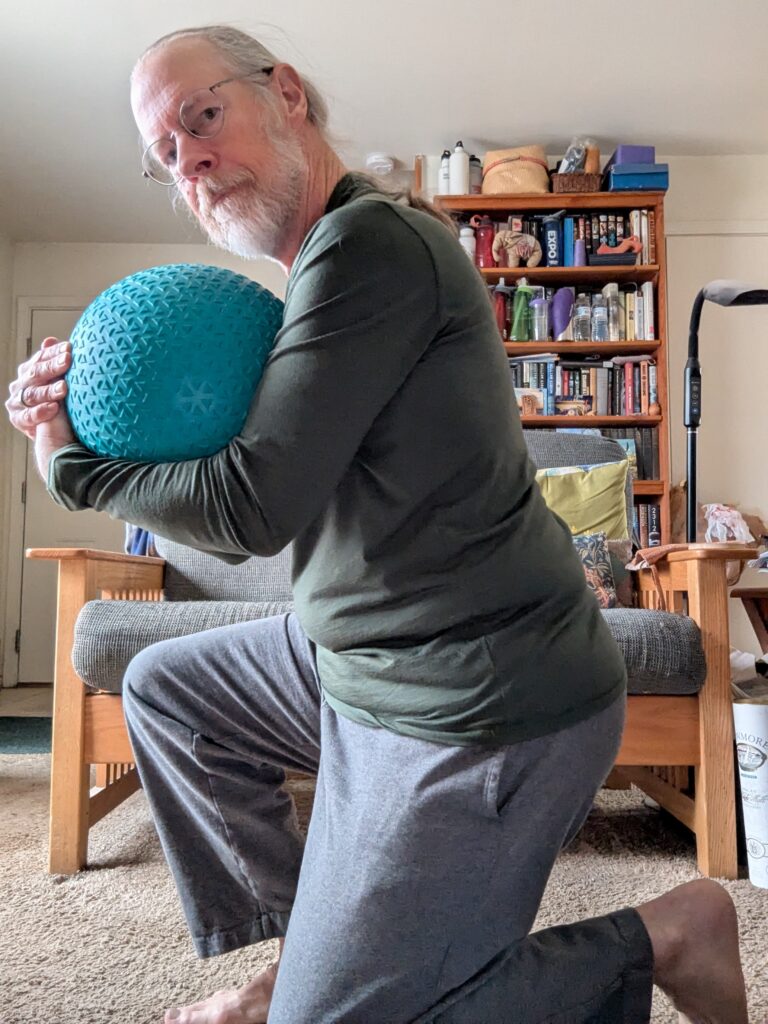For most of my adult life, trying to use “intuition” to decide on rest days would have been a terrible idea. If I’d let myself say, “Hmm. I don’t really feel like a workout today,” I’d scarcely have worked out at all. Instead, I came up with a schedule, and stuck to it, either well or poorly.
When I stuck to it well, I’d see progress. When I stuck to it poorly, I wouldn’t.
Starting around 5 years ago or so, something changed in my brain: I started really enjoying my workouts.
Partially, it was that they were working well, which is just satisfying. But it was more than that. First, I noticed that I felt better after a workout. Then I started feeling better during a workout. Instead of it being hard to motivate myself to work out, I craved workouts.
People who knew me were mildly disturbed by this. It was unlike me. It was certainly unlike them. I would not be surprised if they began to suspect that I was some sort of pod-person.
Because I wanted to work out nearly every day, I would sometimes wonder if I was over-training (or under-recovering), but that’s not trivially easy to determine in the moment.
I’ve long tracked my workouts, but not really in a consistent way—I’d just write down what I did that day. Sometimes I could look back and say, “Wow. That looks like a serious workout,” and other times I’d look back and say, “Was that really a workout?” But often times it wasn’t clear either way.
Just lately though, I’ve been doing the Mark Wildman workout programs that I mentioned a few weeks ago. That gives me a pretty consistent metric. I’m doing three different programs, each of which has 4 to 7 different levels, each of which can be done with an almost infinite range of weights, but they all have a consistency in design: start with a light weight, work up in complexity, then bump up the weight but go back down in complexity. If you’re consciously attempting to make progress, then it’s pretty easy to make each workout “count” as a workout, while avoiding overdoing it in any particular workout.

But while avoiding overdoing it in any particular workout is good, it is possible to do that, and yet get over-trained, simply by doing too many workouts with inadequate recovery.
So, today I went back over my past 3 months’ training log entries. For my first cut at this, I’m just counting rest days. I figure that I want to work out either 5 or 6 days a week, which makes any week where I have either 1 or 2 rest days a “good” week.
In the past 13 weeks I’ve had 1 week with 0 rest days, 1 week with 3 rest days, and 1 week with 4 rest days. All the rest were “good” weeks with either 1 or 2 rest days.
That’s just about perfect. The usual advice is to take a “deload” week every 4 to 6 weeks, so 2 weeks out of 13 being weeks with extra rest just about hits the nail on the head. The one week with 0 rest days was probably just an artifact of rest days falling outside of one calendar week—not a big deal, as long as it’s rare.
Anyway, the intuitive rest days seem to be working well. I’m getting in my workouts, and I’m getting in adequate rest. I guess I can stick with it for a while.
